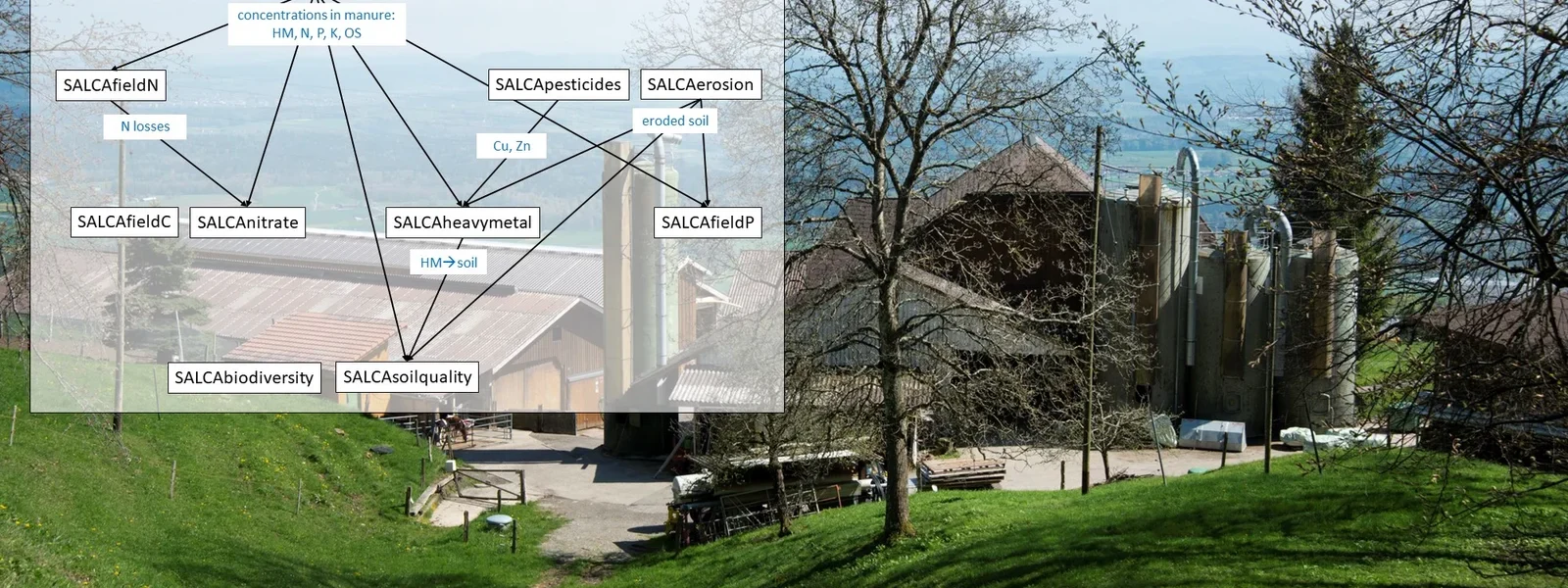The SALCA life cycle assessment method was comprehensively updated in light of new needs, systematically documented and reviewed by external specialists. This will allow a wide range of research issues in the agriculture and food sector to be addressed.
Life cycle assessment studies for the agriculture and food sector face many challenges: the systems they set out to analyse are open, complex, and heavily dependent on natural resources. Consequently, environmental impacts are highly variable and influenced by the soil, climate and management approach.
SALCA Covers New Needs
The Swiss Agricultural Life Cycle Assessment (SALCA) method has been developed for over two decades for the environmental auditing of agricultural products and systems, and has been successfully used to address a wide range of research issues. In recent years new needs have arisen regarding e.g. agricultural policy evaluation, the development of sustainable food systems and site-adapted production, and the determination of reference values for the environmental impacts of various foods. In addition, scientific principles have been constantly evolving. For these reasons, Agroscope experts have thoroughly updated the SALCA method and systematically documented it in one location. The method has been independently peer-reviewed.
Systematically Quantifying the Environmental Impacts of Agriculture
The SALCA concept encompasses rules for defining system boundaries, functional units and allocation rules. It also contains models for calculating field and farmyard emissions, a database with specific life cycle inventories, the SALCAfuture software system for efficient data collection and calculation of life cycle assessments, and impact assessment methods. The latter are specifically designed for agricultural systems. In addition, concepts for analysing, interpreting and communicating the results are provided.
In a recently published paper, Agroscope experts introduce the SALCA concept and method. The paper focuses on emission models for ammonia, nitrous oxide, nitric oxide, nitrate, phosphorus, carbon dioxide, methane, pesticides, heavy metals and erosion, as well as impact models for biodiversity and soil quality.
The Concept can be Applied Throughout Europe
SALCA can be applied for agricultural crops and products, cropping systems, animal production systems, farms, foodstuffs, the agricultural sector and the food system, and in addition can be used for the provision of inventories for life cycle assessment databases. The geographic scope is Central and Western Europe, with a particular focus on Switzerland. Because of its modular and flexible structure, it is easily adaptable to other countries and further issues.








